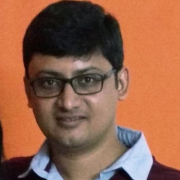

Find out what your peers are saying about IBM, Salesforce, Oracle and others in Enterprise Service Bus (ESB).
We have a good relationship with our vendor, and they are ready to help us with any technical issues.
The technical support of Mule ESB can be rated from nine to ten.
The Salesforce team offers different levels of support.
The support team is responsive and helpful.
Mule ESB is a scalable solution.
MuleSoft Anypoint Platform is quite scalable, and it meets our use cases with no issues preventing implementation.
MuleSoft provides the ability to scale, yet it is costly to do so.
More information is needed from MuleSoft.
From my perspective, Mule ESB is lightweight, but it can be improved when it comes to the agility of the system.
Currently, it uses other standards, but adopting OpenAPI, the standard in the market, would be beneficial.
When dealing with multiple transactions or trading, the system can lose control, and tracking becomes hectic.
MuleSoft is considered expensive, so pricing is a major concern.
I do not know the specific costs, but given that it is part of MuleSoft, I suspect it is not cheap.
MuleSoft is considered one of the more expensive products in the market.
The platform reduces manual workload in maintaining infrastructure, but it does come with some cost considerations.
They have their own language called DataWeave, which helps transform data and is efficient enough to handle any kind of transformation.
The best features of Mule ESB are that it's very robust and solid; I find that even our legacy systems go well with ESB.
The most valuable feature is the full lifecycle management, including Anypoint Designer and Exchange, as well as Discofolio API.
MuleSoft Anypoint Platform helps to standardize data integration approaches, making it easier to implement integration projects.
The platform is integrated with Salesforce, making it preferable when using Salesforce products.
| Product | Market Share (%) |
|---|---|
| Mule ESB | 17.6% |
| IBM Integration Bus | 20.4% |
| webMethods.io | 11.3% |
| Other | 50.7% |
| Product | Market Share (%) |
|---|---|
| MuleSoft Anypoint Platform | 10.6% |
| IBM Sterling B2B Integration Services | 15.1% |
| webMethods.io | 11.9% |
| Other | 62.4% |


| Company Size | Count |
|---|---|
| Small Business | 23 |
| Midsize Enterprise | 6 |
| Large Enterprise | 36 |
| Company Size | Count |
|---|---|
| Small Business | 21 |
| Midsize Enterprise | 12 |
| Large Enterprise | 29 |
MuleSoft Anypoint Platform provides API management and integration capabilities with scalability, ensuring seamless connectivity across systems.
MuleSoft Anypoint Platform offers API management and integration capabilities within a user-friendly interface. With a range of connectors and the ability to handle integration patterns, it enables data integration across environments with support for API-led connectivity. High scalability, observability, batch processing, and tooling are key features, enhancing performance while simplifying deployment.
What are the standout features of MuleSoft Anypoint Platform?MuleSoft Anypoint Platform is employed by organizations for API management and seamless integration across systems in industries like retail and e-commerce. It connects enterprise applications in environments such as SAP and Salesforce. Users leverage it for data transformation and synchronization, achieving efficient real-time processing and a middleware layer across systems.
We monitor all Enterprise Service Bus (ESB) reviews to prevent fraudulent reviews and keep review quality high. We do not post reviews by company employees or direct competitors. We validate each review for authenticity via cross-reference with LinkedIn, and personal follow-up with the reviewer when necessary.